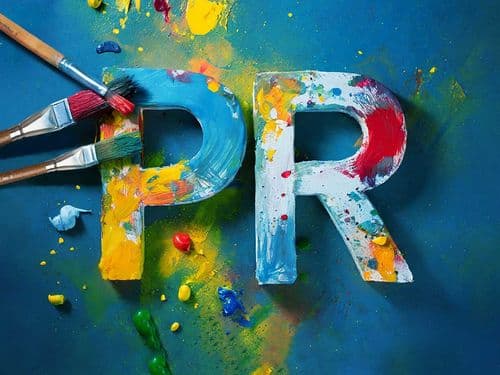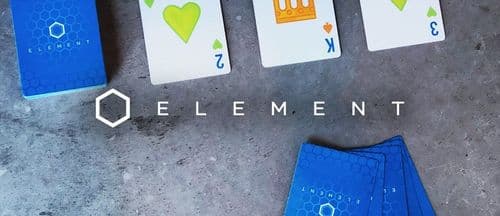Tradeshows, expos, conventions–whatever you call them, these events can strike fear and loathing into the hearts of marketing directors. Will the sales team like the booth? Do I have all the right sales materials prepared? How can I drive traffic, and leads, to the booth? These are just some of the questions that keep even the most seasoned directors awake in the nights leading up to the year’s biggest industry event.
Tradeshow season can put even greater pressure on a marketing team, adding to the already endless daily to-do list. The sales team, too, begins to feel the heat, as they worry whether or not the booth will fill with prospective leads during the show. But, here’s the thing: you don’t have to do it alone.
Element has your back. We’ve worked on a variety of tradeshows across several industries and have a fully-loaded arsenal of tips and tricks up our sleeves to make your company the talk of the show. So, where do we start?
Create a Comprehensive Tradeshow Plan
Starting six to nine months in advance (no, that isn’t a typo), begin the planning process by identifying a few key components of any show: budget, team, and business goals. As you do this, review and audit your marketing budget from previous years and adjust as necessary. Consider what did, or didn’t, work in the past. Was there something you saw at another booth that really caught your eye?
Once you’ve developed your budget, identify internal stakeholders who will attend the show, such as your sales team. Remember, while marketing may drive the coordination of the show, sales becomes the star once you arrive. Engaging the team early and considering their thoughts and recommendations can prevent many headaches later.
Want to learn more about how to integrate sales and marketing? Check out this recent blog post.
Finally, work with those internal stakeholders to identify the goal of the show. Do you plan to launch a new product? Is your focus to drive leads to the booth and further down the sales funnel? Or maybe you hope to generate brand awareness and build connections. Whatever the goal, there is nothing more important than keeping it the focus as you develop the tradeshow strategy and creative plan.
Integrate Your Marketing and Tradeshow Strategy
Once the plan is set, you can begin to develop a comprehensive tradeshow strategy. It is important to remember that this strategy does not begin and end at the show. Both pre- and post-show tactics are vital to your brand’s success.
Eight weeks before the show begins, start to reach out and warm up leads. Let them know you plan to attend, direct them to your online show profile, and invite them to visit your booth. Similarly, vet registered media attendees and begin introductions and invitations to conduct informational interviews at the booth. Remember, their schedules book up early, too!
You will also need to consider how you plan to nurture and advance leads after the show ends. Maybe you develop a custom e-blast thanking attendees for stopping by or perhaps the sales team sends one-to-one emails sharing additional information. No matter the strategy, planning in advance can make post-show follow up seamless and efficient, taking the pressure and stress off marketing directors once they arrive back in the office.
Stand Out from the Crowd through Effective Booth Design
One of the easiest ways to drive traffic to your booth? Stand out from the crowd! Instead of developing creative that goes with the flow in the sea of endless booths, start a new trend all your own. For example, take the recent PACK EXPO 2018 booth Element designed and developed for our client, Fresh-Lock.
The booth, which featured the unique “Welcome to Freshville” theme, drew attention because it broke the mold of the common technical booths, many of which featured eerily similar colors and layouts. In addition, it served as the starting point for the entire tradeshow strategy.
Sales materials were centered around the consumer-based theme, and social posts highlighted the various store fronts. We worked with the Fresh-Lock sales team to ensure that materials aligned with their goals and answered frequently asked questions from leads and show attendees. These materials also proved to be a valuable resource for earned media, as editors requested them as a takeaway for future content and stories.

Notice, we did not mention tchotchkes … We firmly believe that great booth design, comprehensive sales materials, and an integrated promotion strategy draw more foot traffic and make a greater impact than a free water bottle, bottle opener, or notebook. While they can work as a useful and fun supplement to the booth, they need to work in tandem with the overall creative design.
Promote & Market Your Tradeshow Presence
Your organization spends thousands of dollars to attend shows, so people better know you’re there! Create a promotion strategy that extends across all forms of media: owned, earned, social, and paid. For starters, update and build out your exhibitor profile on the show’s site. As you begin to develop other promotional materials, such as press releases, this is also a great place to publically house that information.
On your own website, consider developing a landing page dedicated to the tradeshow. This page will serve as a central hub for all show information, including location, a preview of the booth, and also any outside events such as speaking engagements. The landing page can be shared with prospective leads as part of e-blasts or physical mailers that includes trackable vanity links. It also serves as a great measurement tool when reviewing results post show as you can review clicks, downloads, and more.
Social media is also a powerful communication tool at tradeshows. Before the tradeshow begins, share teaser posts with booth information and any special events you have planned. This is also a great opportunity to utilize paid or sponsored social posts to ensure your content is reaching your target audience.
While at the show, social media content can range from in-booth interviews with your subject matter experts, reminders of presentations or events, invitations to visit the booth, and a thank you to those who do stop by. You can also monitor relevant tradeshow accounts and hashtags to join the conversation when appropriate.
In need of some fresh tradeshow Twitter tips? Look no further than this #PRbrief.
Work It IN Your Booth
You’ve planned, you’ve prepared, and you’ve arrived at the show. Now, it is time to work it in your booth! Start by hosting an in-booth training for your sales teams. During this session, prior to the show opening, provide relevant key messages and discuss talking points for meeting with potential customers. It is also important to review all materials in the booth, so everyone understands the resources available to them. This way, attendees receive a warm welcome and informative meeting when they visit the booth.
You can also engage attendees and showcase your in-house expertise by hosting in-booth events such as lunch-and-learns, happy hours, booth parties, or technical talks. Be sure to promote these events on social media and invite attendees and the media both in advance of the show and during meetings and conversations once you’ve arrived. Worried there may not be enough space? Consider securing a different area at the show for a few hours or selecting an outside location in the host city.
It is also important to scan badges or find other ways to track leads as visitors enter your booth. This not only serves as a way to monitor those who visited your booth but also creates an active list for post-show outreach. Don’t forget to bring plenty of business cards for a good, old-fashioned exchange of contact information.
Work it OUTSIDE Your Booth
Your organization’s tradeshow presence should also extend well beyond your designated floor space. Be sure to not only explore other booths but also leverage your exhibition across the entire expo center. Becoming a show, stage, or other type of sponsor guarantees your company name and logo will gain extra eyes over the course of the tradeshow. Be sure to attend general events such as concerts, luncheons, or demonstrations yourselves. It offers a great way to network and meet attendees that you can invite to visit your booth.
In addition, speaking engagements are a great way to spread your brand message and thought leadership to a wide industry audience. These opportunities are often up for grabs months in advance, so be sure to plan early. We’ve found that speaking opportunities are one of the most effective ways to generate leads at shows, as it give exhibitors the platform to share their expertise with a wide audience.
Similarly, awards allow brands the opportunity to highlight their excellence in front of potential leads and industry editors. These, like speaking opportunities, require applications or nominations well in advance of the event. During the planning stages of your tradeshow strategy, consider which products or people might be good fits and review award opportunities, which are usually listed on the tradeshow site.
While it may seem daunting now, planning a tradeshow can be a manageable, positive, and rewarding experience. All it takes is the proper strategy and the right support system. The hard work invested in a tradeshow adds value not only for those few days in the booth, but it can also serve as the foundation for the entire year’s marketing as your team utilizes assets and leads already developed.
Working on your 2019 planning? Give us a shout! We can lend a hand and make your next tradeshow a stress-free success.







